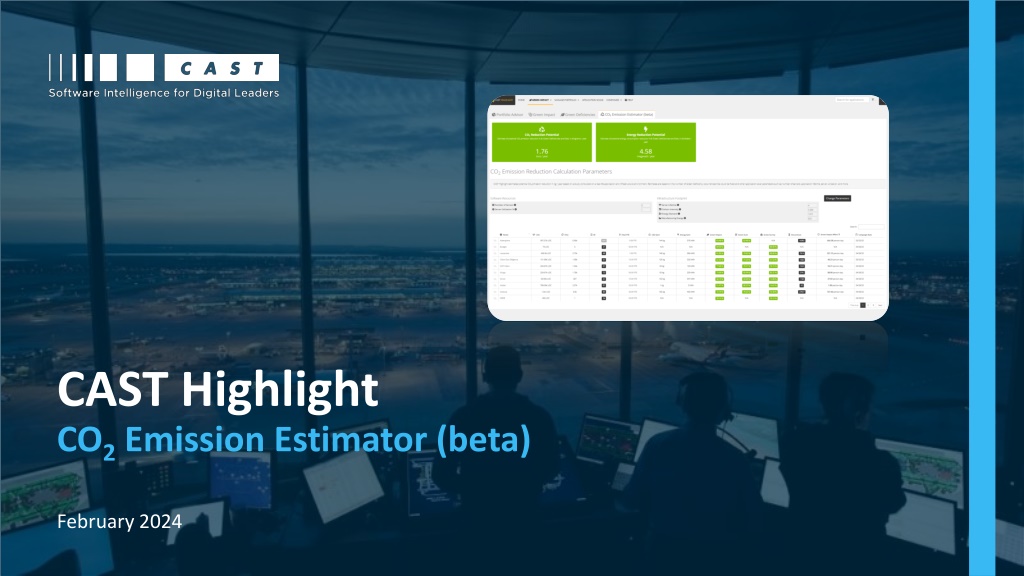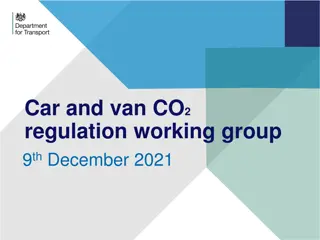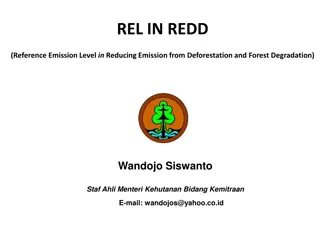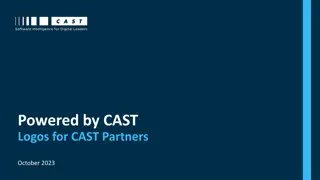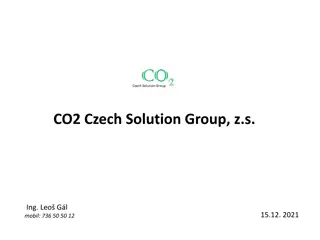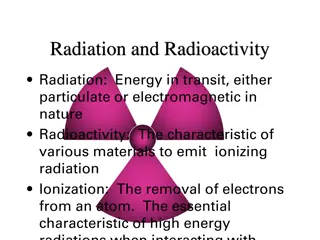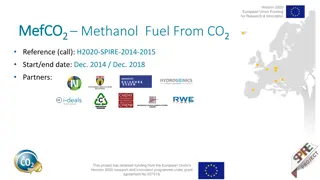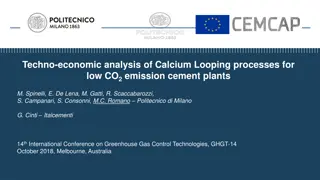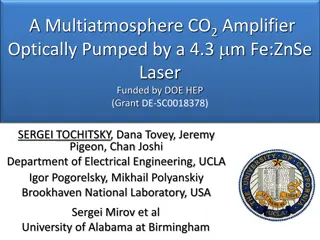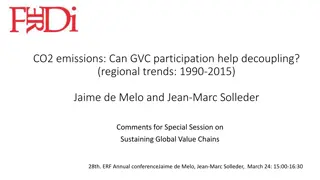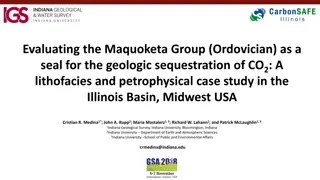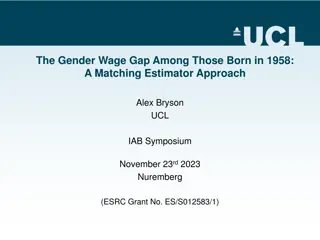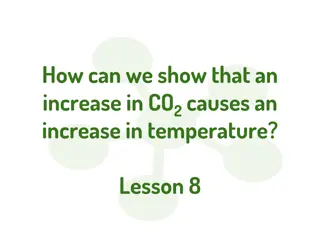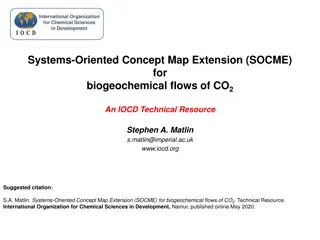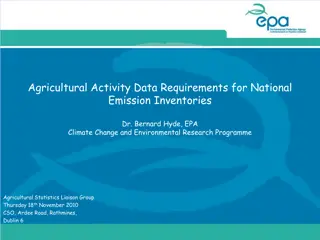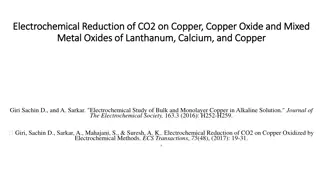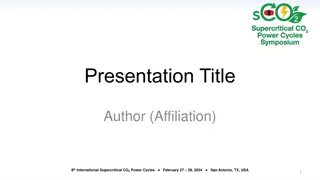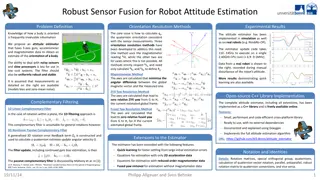Developing the CAST Highlight CO2 Emission Estimator (Beta) - February 2024
CAST Research Labs studied the impact of removing green deficiencies detected by CAST Highlight on CO2 emissions and energy consumption in custom software applications. The study led to a formula for estimating potential CO2 emission reductions, which was integrated into the new CAST Highlight CO2 Emission Estimator dashboard released in Winter 2024. Details on the study, formula, and product capabilities are outlined in this document.
Download Presentation

Please find below an Image/Link to download the presentation.
The content on the website is provided AS IS for your information and personal use only. It may not be sold, licensed, or shared on other websites without obtaining consent from the author. Download presentation by click this link. If you encounter any issues during the download, it is possible that the publisher has removed the file from their server.
E N D
Presentation Transcript
CAST Highlight CO2 Emission Estimator (beta) February 2024
Contents Overview Summary of the CO2 emission reduction study Formula for estimating potential CO2 emission reduction Formula parameters Formula illustration CO2 Emission Estimator product capability Current constraints The path forward castsoftware.com
Overview CAST Research Labs conducted a study to understand the impact on CO2 emissions and energy consumption when removing green deficiencies automatically detected by CAST Highlight from the code of a custom software application. The results of the study were used to develop an initial formula for estimating the potential CO2 emissions reduction and build it into CAST Highlight. The formula is the basis of the new CAST Highlight CO2 Emissions Estimator dashboard that was released in beta in Winter 2024. This document includes more detail on this new capability, the underlying formula it leverages, and how it was developed. castsoftware.com
Summary of CO2 Emissions Reduction Study CAST Research Labs conducted a study to understand the impact on CO2 emissions and energy consumption when removing green deficiencies from the source code of a custom software application. Here is an abridged summary of the steps in the study: 1. The application was analyzed by CAST Highlight to identify all green deficiencies. 2. The application was operated on the cloud and key application functions were executed thousands of times using automated tools. 3. The execution duration of the functions was measured using available diagnostic tools on the cloud platform to create a baseline. 4. A selection of ten (10) green deficiencies related to these application functions were then remediated with a more efficient coding method. The remediation process took an estimated four person days of effort. 5. The execution duration was then measured again for the greener version of the application and there was a ~5% improvement in the duration. These results were used to develop a formula for estimating the potential improvements in CO2 emissions and energy consumption that could be experienced for any application. 6. 7. The formula was then built into CAST Highlight and released in beta since it is based on a small sample size and will be refined over time when additional results are available. castsoftware.com
Formula for estimating potential CO2 emission reduction ?????????????? ???????? ??? ????.?. ???????.?? ??2?? ???????? ????????? = + ?? .?? Number of green deficiencies per MLOC Experimental reduction factor Software activity Resource footprint castsoftware.com
Formula Parameters Parameter Description Source nGD Number of green deficiencies detected Automatically calculated by CAST Highlight MLOC Millions of lines of code Automatically calculated by CAST Highlight f The factor to calculate potential reductions if green deficiencies are fixed as observed in the study conducted by CAST Research Labs Fixed value: 0.004 %.MLOC/deficiencies nserver Number of servers that the application utilizes to operate User supplied (default = 3) ts The time sharing or percent utilization of the server resource capacity User supplied (default = 100%) emanufacturing The CO2eq emissions during manufacturing of servers User supplied (default = 320 kgCO2eqfor a DELL PowerEdge R640) lifetime The expected lifetime of the servers in years User supplied (default = 4) ed The annual energy demand for each server User supplied (default = 1670 kWh/year for a DELL PowerEdge R640) User supplied (default = 0.336 kgCO2/kWh for North America) CI The carbon intensity of the environment where the application is running castsoftware.com
Formula Illustration Using results from the CAST study with the following parameters: 282.42 kLOC => 0.28242 MLOC nGD : 1676 green deficiencies CI: 0.336 kgCO2eqper server per year in North America region ed: 1670 kWh per year emanufacturing: 320 kgCO2eq l: 4 years nserver: 3 DELL PowerEdge R640 equivalent ts: exclusive use 100% Calculated results: Potential Emission Reduction: 404 kgCO2eqper year or 1.1 kgCO2eqper day castsoftware.com
How is the formula related to the Green Software Foundations SCI? CAST utilized the GSF s Software Carbon Intensity (SCI) formula as a basis for our calculations. SCI = ( O + M ) / R O operational emissions M embodied emissions R functional unit O = ( E x I ) Eenergy consumed O is represented by the nserver, ts, ed, CI parameters in CAST s implementation I location-based marginal carbon intensity M = TE x TS x RS TE total embodied emissions, across the whole lifecycle of the resource M is represented by the nserver, ts, emanufacturing, lifetime parameters in CAST s implementation TStime-share, in case the resource is not allocated to the software 100% of the time RS resource-share, in case the resource is shared with other pieces of software R = the entire application in the CAST implementation Note: the GSF has submitted the Software Carbon Intensity (SCI) formula to ISO with expected approval as a standard in 2024. castsoftware.com
CO2 Emission Estimator (beta) available within CAST Highlight Get estimates on the potential reduction in CO2 emissions and energy consumption if Green Deficiencies are fixed in applications Initial beta release in Winter 2024 based on internal CAST study results Estimate calculations are based on a combination of automatically generated insights and user-configurable parameters such as the number of servers, server utilization, energy demand, and more castsoftware.com
Current Constraints and Limitations The CO2 Emissions Estimator is released in beta form due to the following constraints and limitations (to name a few): The formula is based on a single application study and one round of remediation All green deficiencies are weighted equally in terms of potential reduction impact The default values for parameters such as server choices, region, etc. could be quite different than a given organization s specific situation, so users will need to know their corresponding values for more accurate estimates The potential reduction in CO2 emissions and energy is only realized if the newly available resources are used for some other operation or productivity castsoftware.com
The path forward Gather feedback from clients and partners during the beta release to enhance the product capability Work with partners and clients to perform additional studies for refining the formula parameters Develop real-world case studies that can be shared publicly castsoftware.com
